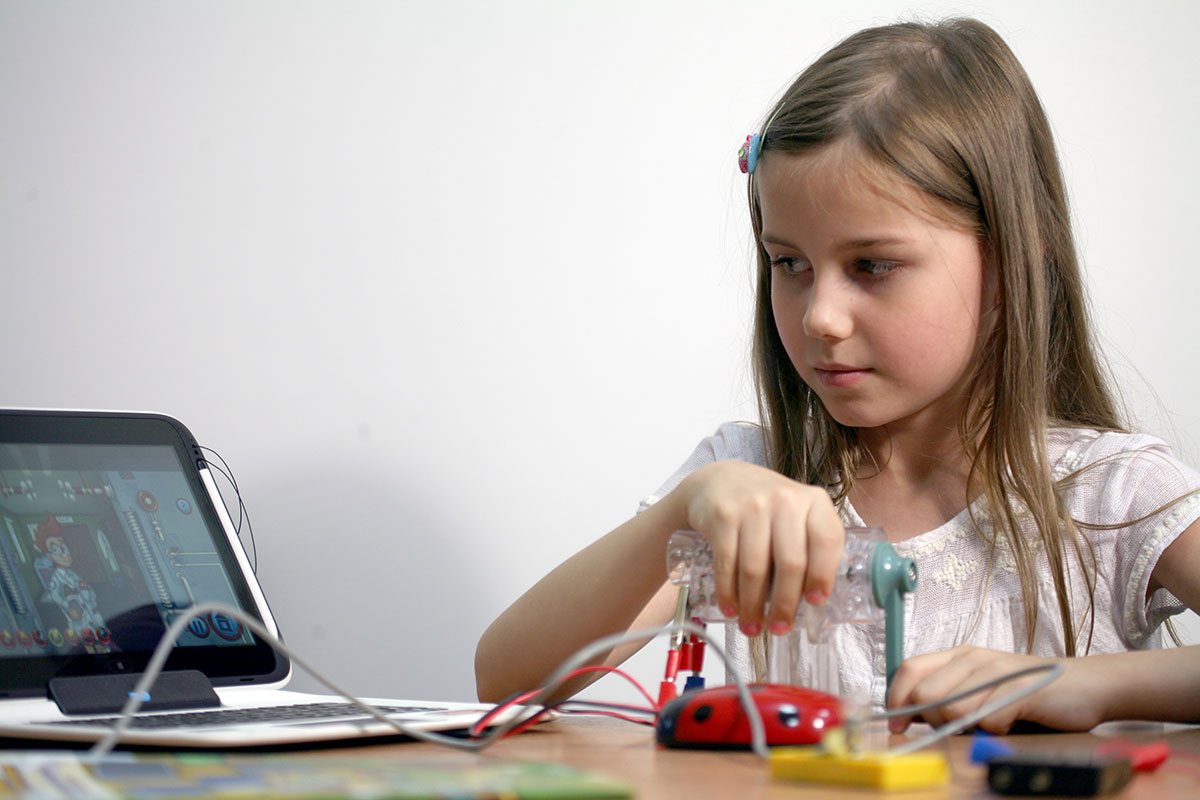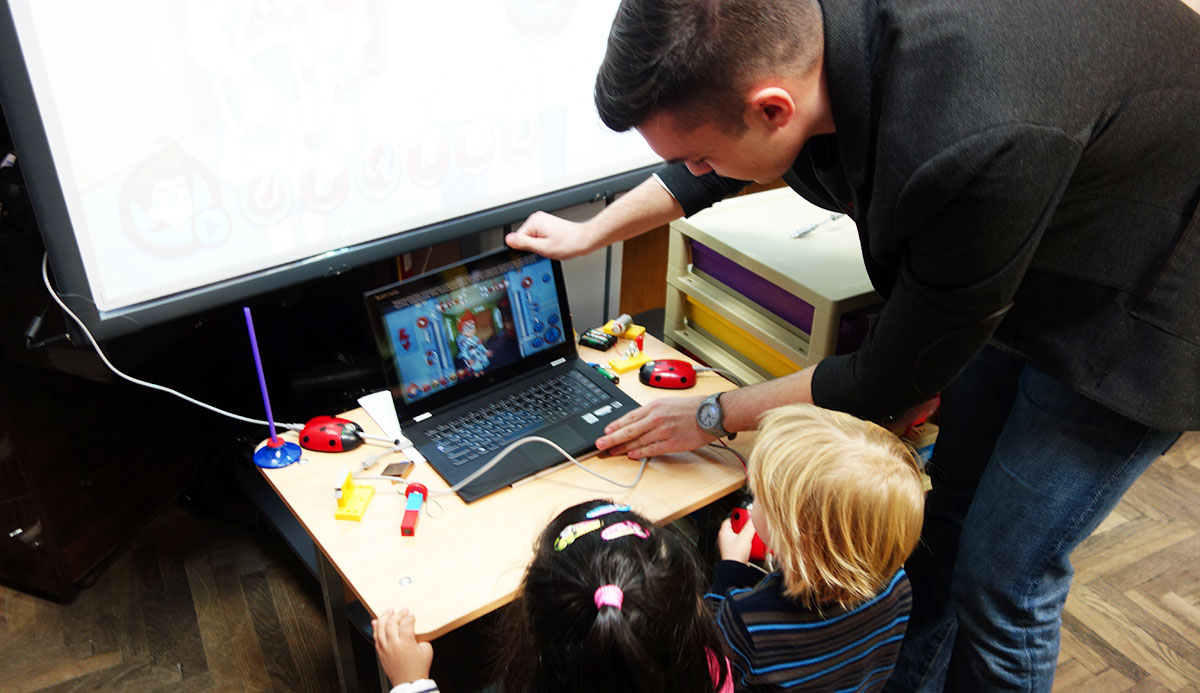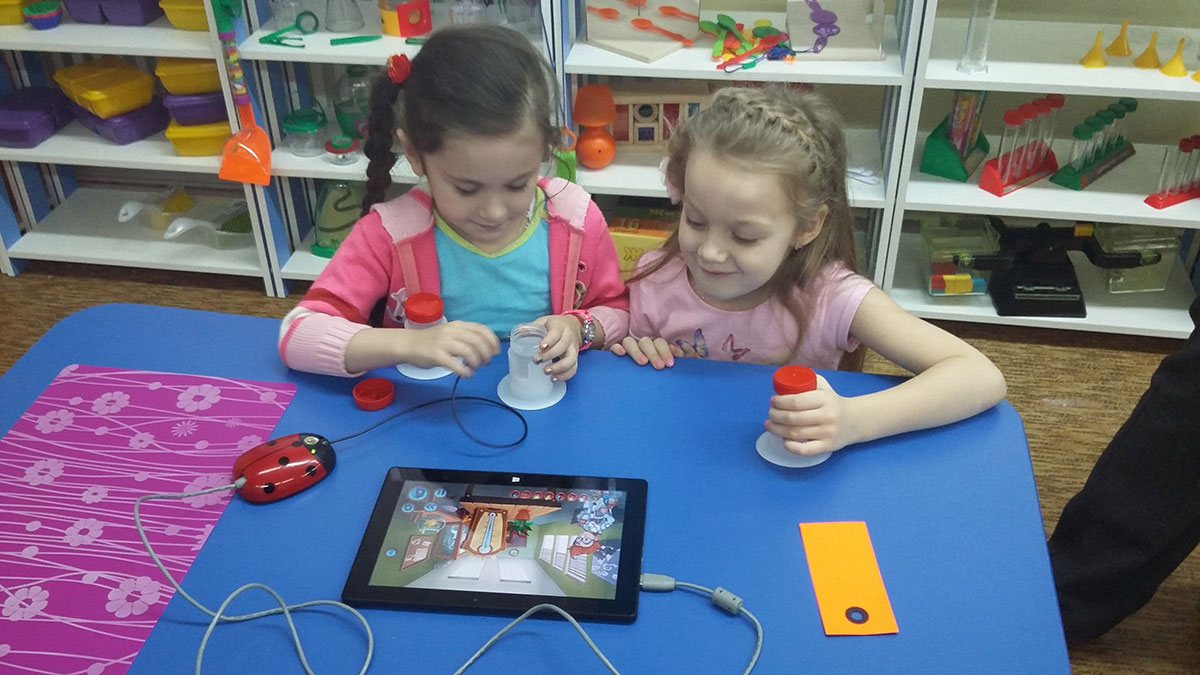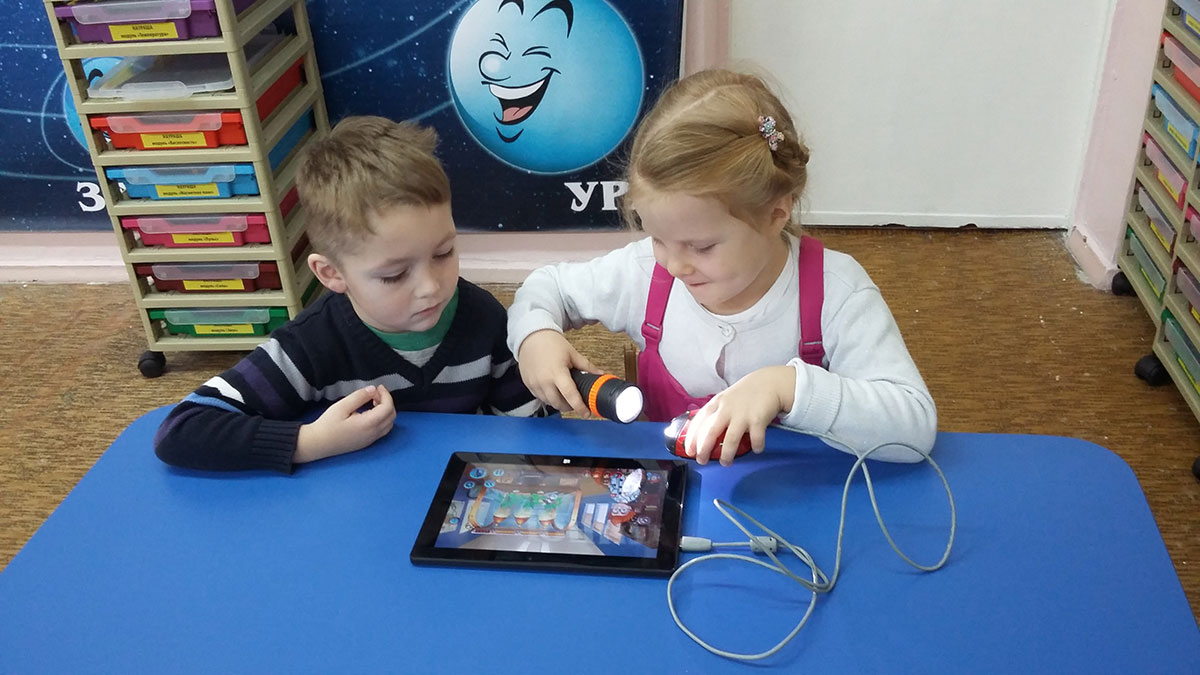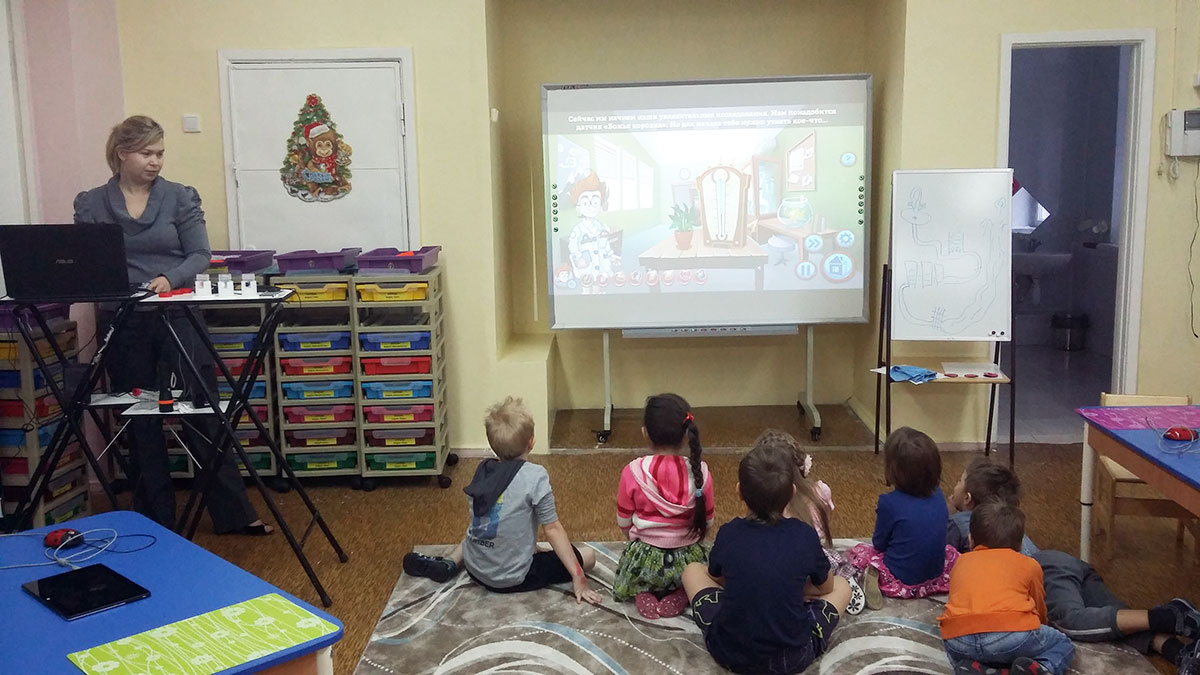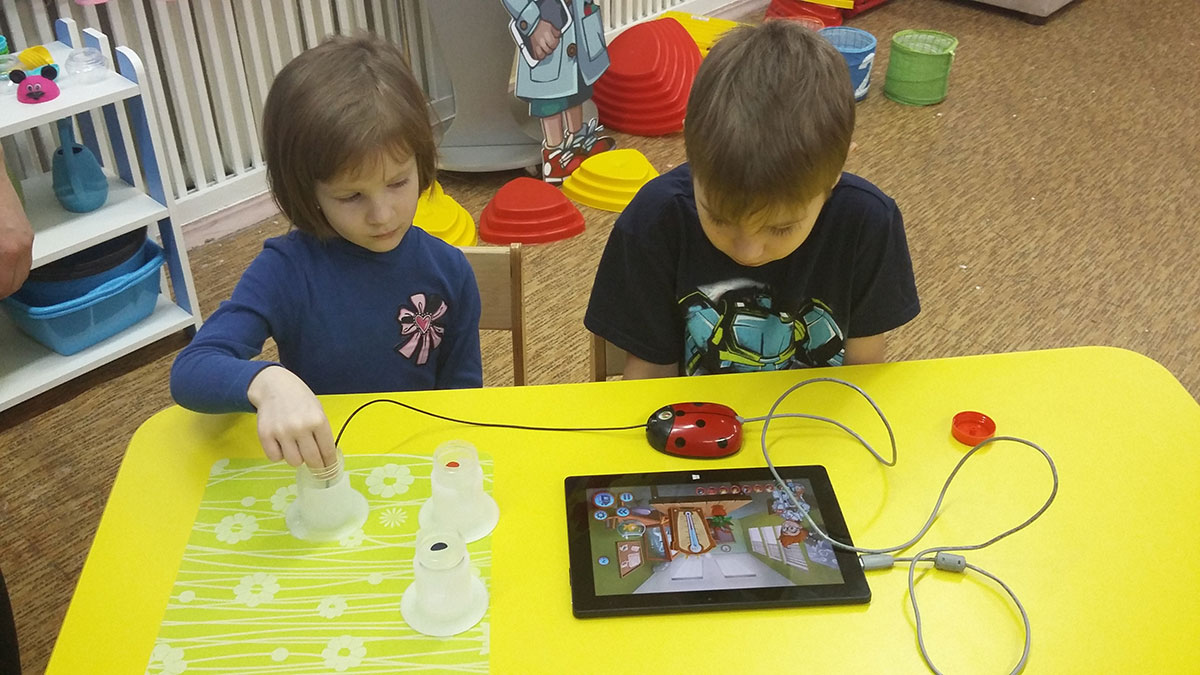
Product goal
Scifun Savanto laboratory complies with the National Standard of Preschool Education to assure development and support of
- child’s exploratory initiative, interests and activities in various applications
- cooperative engagement of children and adults in education process as equal participants [Engaging children and adults in cooperative education process as equal partners in knowledge discovery]
What is in the lab
The digital laboratory builds on eight virtual lab sets enabled by the supplied computer program. The sets are dedicated respectively to temperature, light, sound, magnetic field, electricity, forces, heart rate, taste.
For each virtual lab the following is included:
- a digital sensor shaped as a big ladybird
- additional equipment stored in a dedicated tray
Lab functionality
Our cartoon hero Scifun Savanto helps his little peers study phenomena of nature with real sensors in the setting of an entertaining game.
Scifun Savanto's interests range from the environment around us to safety in everyday life to robotics.
Many ways to work with the lab
A teacher has the following options:
- working with single group of children or divide it into subgroups and assign specific tasks to them
- using either the enclosed model lessons plans or one’s own plan
- assigning individual sequence of tasks within the game
Children’s options include performing experiments individually or in pairs. Some tasks require comparison of the results of the experiments.
Any experiment can be is easily rerun in the digital lab environment.
You can learn more about scifun steve lab and order it at out official website scifun en.naurasha.ru
A word on SciFun Savanto
It took Just slightly more than a year for the name of our little researcher Scifun Savanto to gain wide recognition everywhere from Moscow to the farthest corners of our great country. This curious boy sharing wonders of scientific exploits with his peers found good home in the kindergartens from Chukotka and Yakutia to Tomsk and Samara, both in the big cities and small villages, in all time zones.
Even we, the inventors and developers of Scifun Savanto’s image and the lab, were surprised by such a favorable reaction of the Russian educational community. Then — what are the reasons for this success? From very beginning we set [a very ambitious and demanding goal] [a very high bar] to explain to the children, who may not have acquired reading and writing skills yet, what are temperature, magnetic field, acidity, heart rate and much more. As it turns out, modern interactive and animation technologies can help in delivering this ambitious curriculum in engaging and entertaining manner. As far as we can tell from our analysis of the modern market of education, our product represents a rather unique application of these technologies; it does not have analogues in both in Russian and international educational practice.
When at the starting point of this project we had to commit and did commit ourselves to such an undertaking, we already had 20 years of experience in building digital laboratories.
What are the main idea and the edge of this product? Modern children get used to computer technology very early and admit it as an interesting play companion with all advantages and disadvantages carried by virtual communication.
Scifun Savanto Lab takes a virtual exploration to the real world by plugging a set of digital sensors into computer. Scifun Savanto speaks to the child along the way, explains nature’s phenomena, advises on how to carry out an experiment, and provides a prompt feedback in the form of witty comments to the actions of Lab user.
On one hand, the child without any preliminary knowledge should be able to access and understand the content of the laboratory, while on the other hand the explanations had to be very accurate to avoid reeducation afterwards. This imposed a difficult requirement both on the lab content and its way of delivery. The trials of the product confirmed that the chosen approach adequately suits to the child’s perception of a new material.
While running tests we also identified the main problem to be lack of proper training of modern kindergarten teachers as our product took them by surprise and made apply some efforts to learn rules and ropes of the new technology.
Respectfully yours,
Oleg A Povalyaev


